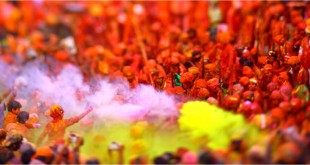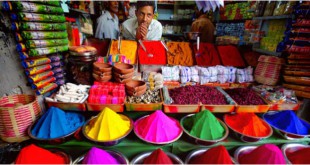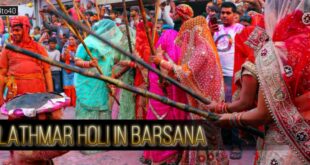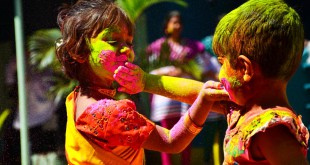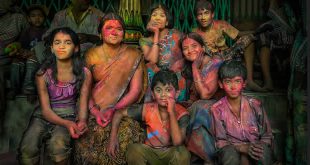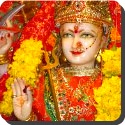 The Navratri festival is dedicated to the Mother Goddess. Known by other names such as Durga, Devi, she occupies a special place in the Hindu pantheon. She represents Shakti, the cosmic energy that animates all beings, and is also considered to be prakriti (nature), the counterpart of purusha. Together, they are responsible for the creation of the world according to the Puranas and Vedas (ancient Hindu Scriptures).
The Navratri festival is dedicated to the Mother Goddess. Known by other names such as Durga, Devi, she occupies a special place in the Hindu pantheon. She represents Shakti, the cosmic energy that animates all beings, and is also considered to be prakriti (nature), the counterpart of purusha. Together, they are responsible for the creation of the world according to the Puranas and Vedas (ancient Hindu Scriptures).
In West Bengal, it takes the form of Durga Puja, an occasion to celebrate the Triumph of Good over Evil. According to legend, a vicious buffalo-demon, Mahishasura, had raised hell at the gates of heaven, causing widespread terror. The Goddess Durga was actualised by the combined efforts of all the deities to slay him. Thus, Durga astride a lion, with an assortment of weapons in her 10 hands, slayed Mahishasura. Durga is also worshipped as Shakti, and beautiful idols of the Mother Goddess adorn elaborate pandals (marquees) for five days (starting from the fifth day of Navratri). Believers (and non-believers) flock to these pandals with gay abandon. On the tenth day of the celebrations, the idols are carried out in colourful processions to be immersed (visarjan) in a river or a pond.
In the state of Punjab, people usually fast during this period, for seven days, and on Ashtami, the eighth day, devotees break their fast by worshipping young girls who are supposed to be representatives of the Goddess herself by offering them the traditional puris (sort of deep-fried Indian bread), halwa (a dessert primarily made of flour and sugar), chanas (Bengal gram) and red chunnis (long scarves). In this region, the festival is predominantly linked with harvest. This is the time of the khetri, (wheat grown in pots in the urban context) that is worshipped in homes, and whose seedlings are given to devotees as blessings from God.
In the South Indian states of Tamil Nadu, Karnataka and Andhra Pradesh, the festival of Navratri is celebrated in a different manner. Women adorn their houses with dolls (Bommai Kolu), draw traditional designs or rangolis (patterns made on the floor by using various coloured powders and flowers), and light lamps. During this festival (also known as Kolu in the state of Tamil Nadu), families proudly display traditional wooden dolls and gather to sing songs and depict scenes from the various epics, for a period of ten days. Another runaway hit is the sundal, a special sweet made from lentil and brown sugar. Families and friends exchange the traditional gifts of coconuts, clothes and sweets on this occasion.
The festival of Navratri acquires quite a fascinating and colourful dimension in the region of Gujarat, and in some parts of Rajasthan. The highlights of the festival are the extremely colourful dances of Garbha and Dandiya-Rasa during which, both men and women dressed in the traditional attires of dhoti-kurta (traditional Indian attire worn by menfolk, comprising a long shirt and a long flowing garment worn over the lower part of the body), and chania-choli (mirror-work skirts and blouses), put up stunning performances to the vibrant rhythm of music. These dances are performed around the traditionally decorated terracotta pot called the garbi that has a small diya (lamp) burning inside signifying knowledge, or light meant to dissipate the ignorance, or darkness, within. Dholak players (drummers) accompany the dancers, and groups of singers sing songs handed down generations.
The nine-day Navratri festival and the Vijayadashami day in Kerala is mainly dedicated to Goddess Saraswathi and is noted for the Vidyarambham ceremony. Another important ritual is the Ayudha Puja. On the Vidyarambham day, young children are introduced into the world of alphabets or letters and they take the first step into the world of knowledge.
 Kids Portal For Parents India Kids Network
Kids Portal For Parents India Kids Network
